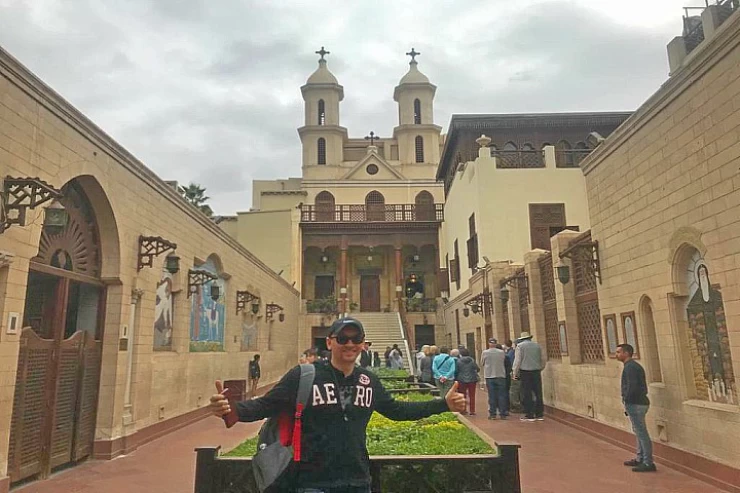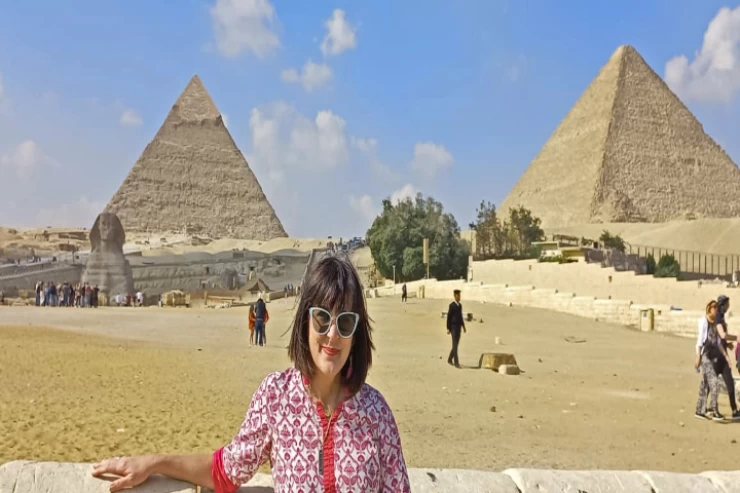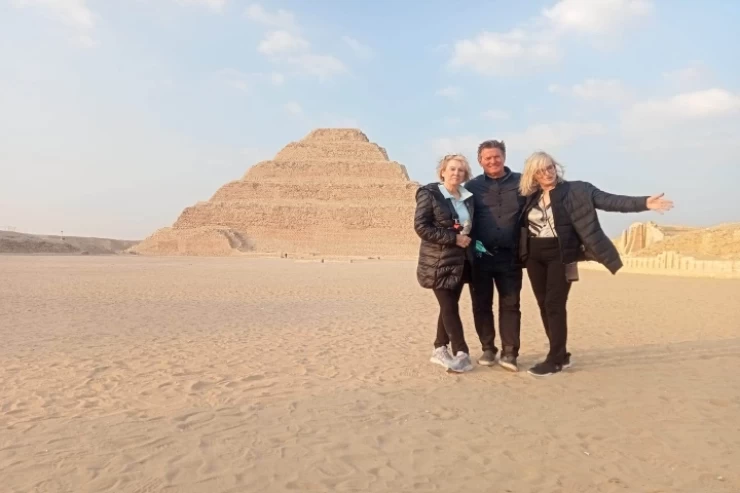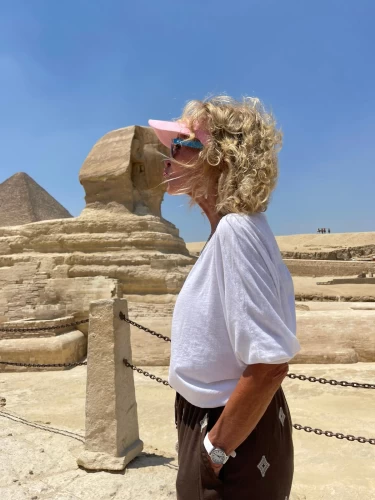
Religion en Egypte
Religion en Egypte
Selon la Constitution de 1971 et la Déclaration constitutionnelle de l'Égypte, l'islam est la religion officielle de l'Égypte et la majorité de la population de l'État le doit. Il n'y a pas de pourcentages spécifiques d'adeptes de croyances pour l'Égypte, puisque les statistiques officielles égyptiennes ont cessé de mentionner le nombre d'adeptes de religions et de sectes depuis le recensement de 1996. Mais nous pourrions dire que la religion en Égypte contrôle de nombreux aspects de la vie sociale et qu'elle est soutenue par la loi. La religion en Égypte contrôle de nombreux aspects de la vie sociale et est approuvée par la loi. La religion d'État de l'Égypte est l'Islam. Bien que les estimations varient considérablement en l'absence de statistiques officielles. Depuis le recensement de 2006, les statistiques disponibles sont donc des estimations faites par des agences religieuses et non gouvernementales. Le pays est majoritairement musulman sunnite (avec des estimations allant d'environ 80% à 94%), le deuxième groupe religieux le plus important étant les chrétiens coptes (avec des estimations allant de 6% à 20%). Les chiffres exacts sont sujets à controverse, les chrétiens affirmant qu'ils ont été systématiquement sous-dénombrés dans les recensements existants.
L'Égypte reçoit deux des principales institutions religieuses. L'Église copte orthodoxe a été fondée à Alexandrie, qui a été fondée par Saint-Marc au milieu du premier siècle. La mosquée Al-Azhar a été établie en 970 après J.-C. par les Fatimides en tant que première université islamique en Égypte. Musulmans et chrétiens En Égypte, partagent une histoire, une identification nationale, une ethnie, une société, une culture et une langue communes.
Parmi les sites religieux communs en Egypte se trouve la mosquée à côté de l'église, où 2002 sous le gouvernement de Moubarak, (7 janvier) était considérée comme un jour férié à l'occasion de Noël en Egypte, bien que les chrétiens représentent le minimum dans l'application de la loi, la sécurité de l'Etat , et les fonctions publiques Et d'être victime de discrimination dans la main-d'œuvre sur la base de leur religion.
Relations avec la minorité copte;
Les chrétiens coptes, qui représentent les plus anciennes religions d'Égypte, sont devenus la plus grande minorité ethnique et religieuse d'Égypte après leur entrée dans la conquête islamique de l'Égypte, et ils sont maintenant plus touchés par une législation qui peut les discriminer. Les coptes en Égypte ont été confrontés à une marginalisation croissante après le coup d'État de 1952 dirigé par Gamal Abdel Nasser. Jusqu'à récemment, les chrétiens devaient obtenir l'approbation présidentielle même pour des réformes mineures de l'Église. Bien que la loi ait été assouplie en 2005 en transférant le pouvoir d'approuver les dirigeants, les Coptes ne sont plus confrontés à des obstacles dans la construction de nouvelles églises.
Ancienne religion égyptienne;
La religion égyptienne antique, avec son système complexe de croyances et de rituels, faisait partie intégrante de la société égyptienne antique. Elle a prié sur l'interaction des Égyptiens avec de nombreuses divinités dont on pense qu'elles existent et contrôlent le monde, où des rituels tels que la prière et les offrandes ont été présentés aux divinités pour obtenir leur satisfaction. L'une des pratiques religieuses officielles qui se concentrait sur les pharaons était les dirigeants de l'Égypte, où il croyait posséder le pouvoir divin de par leur position. Ils ont agi en tant qu'intermédiaires entre leur peuple et les dieux, et ils ont été obligés de préserver les dieux de l'Égypte ancienne à travers des rituels et des spectacles afin qu'ils puissent préserver leur propriété et leur statut, car l'ancien État consacrait d'énormes ressources aux rituels religieux et à la construction de temples pour le dieu pharaonique.
Les individus étaient autorisés à communiquer avec les divinités pour leurs propres fins et à demander de l'aide par la prière ou en forçant les divinités à agir par magie. Ces pratiques étaient distinctes des rituels et des institutions formelles mais leur étaient étroitement liées. La célèbre tradition religieuse est devenue plus notable tout au long de l'histoire égyptienne à mesure que le statut du pharaon a décliné. La croyance égyptienne dans l'au-delà et l'importance des pratiques funéraires est évidente dans les grands efforts déployés pour s'assurer que leur vie reste après la mort - en fournissant des tombes et des biens massifs et en proposant de préserver les cadavres et les âmes du défunt et ses propriétés.
Les détails de la croyance religieuse ont changé avec le temps, car les racines de la religion remontent à la préhistoire en Égypte et ont duré plus de 3000 ans. Alors que l'importance de certaines divinités augmentait et diminuait, et que leurs relations complexes changeaient à certains moments. Et par conséquent certaines divinités sont devenues proéminentes pour d'autres, y compris C'est le dieu soleil Ra, le dieu créateur Amon et la déesse mère Isis. Pendant une courte période, dans la théologie promulguée par le pharaon Akhenaton, qui a déplacé sa capitale à Tel El Amarna à El Minya de nos jours, un nouveau dieu unique a été promu, Aten, a remplacé le panthéon traditionnel. La religion et les légendes égyptiennes anciennes ont laissé de nombreux écrits et monuments autres que les grandes influences sur les cultures anciennes et modernes.
Des circuits en Egypte remarquables et sûrs ! Avec nos circuits de Pâques en Égypte 2023, vous ressentirez la grâce de l'esprit antique des Égyptiens en explorant les majestueuses pyramides, les temples, les tombeaux qui hantent votre esprit et votre âme tout en bénéficiant du meilleur service. Des meilleures croisières sur le Nil aux forfaits classiques de visites de sites historiques, Cairo Top Tours propose une gamme d'activités et de vacances d'aventure en Égypte. Outre les sites historiques traditionnels, nous proposons une sélection distinctive de safaris dans le désert égyptien à travers le silence magique et l'attrait des Oasis de Siwa, dans le désert égyptien. Choisissez parmi les meilleures offres d'excursions d'une journée en Égypte et choisissez l'une de nos superbes excursions d'une journée au Caire. Nos passionnantes excursions à Louxor et excursions à Assouan vous feront découvrir tous les chefs-d'œuvre historiques de la ville. Notamment la fascinante Vallée des Rois, le fantastique temple de la reine Hatchepsout et les temples uniques d'Abu Simble, le tout accompagné d'un guide expert qui vous expliquera l'histoire de ces incroyables sites.
If Egypt has often been referenced by historians as ‘the Cradle of Civilization’, it has probably one of the most complicated religious aspects in entire human history. The fertile banks of the Nile did host agriculture, but they also produced a vast culture, where religion permeated every single aspect of everyday life, politics, and social order. From the earliest days of ancient Egyptian civilization up to this day, despite being primarily a desert dry land, Egypt has been a melting pot of different religions, starting from polygamy to finally embracing monotheism.
In this piece, Section II, How We Were: Reflections on Egyptian History, From Ancient Polytheism to Christianity & Islam, will be reviewed and analyzed, as well as the role of religion in the lives of the Egyptian population.
As a society, it can be said that religion was the foundation of ancient Egypt. The ancient Egyptians worshiped as they knew that everything from the annual flooding of the Nile to the cycle of life and death was not only natural but controlled by some divine power. This was a belief characterized by a multiplicity of deities, all of whom were in charge of a specific facet of existence and/or nature.
The Major Gods and Goddesses
Ra (or Re): Revered as the God of the Sun, Ra has been depicted as the most potent deity in ancient Egyptian religion. It was believed that Ra inhabited the sky during the day, providing light to the earth, and resided in the underworld at night. He would oftentimes be portrayed with a falcon’s head and wear a sun disk on top of his head.
Osiris: Osiris was an Egyptian death and resurrection god and held a significant place in Egyptian mythology in representing the concept of life as a cycle of birth, death, and resurrection. The Osiris myth and his resurrection, in the capable hands of Isis, his wife, became the pillars of the Egyptian afterlife experience.
The goddess was immensely popular and powerful. She was a protector of motherhood, magic, and fertility. Her protective aspect and the ability to bring Osiris back to life made her worshiped.
Horus, the god of the sky and of the king, is often shown as a hawk. He was also known because of his rivalry with the chaos god Set for dominion over the land of Egypt, which represents the struggle of order and chaos.
Anubis is the Egyptian god associated with funerary rites and the protection of the dead. He had the important task of supervising the ceremony of the heart's weighing, which assessed a person’s spirit in the next world.
The gods were not distant or abstract figures; they were present in every facet of life. Egyptians built temples across the country, conducted elaborate rituals, and offered daily prayers and sacrifices to ensure the favor of the gods and maintain ma’at—harmony and order.
Worship wasn’t the only reason for building temples; these structures were believed to be the earthly homes of the gods. The pharaohs had enormous temples like Karnak and Luxor built to worship and carry out rituals for the gods as well as to showcase the power of their rule over the land. No one was permitted to enter the temple’s most sacred, innermost areas except for the priests, who were thought to be the only ones capable of interacting with the gods.
Priests offered meals, incense, and prayers to the gods on a daily basis, performing their duties towards ensuring the gods’ continuous provision of security over the land of Egypt. These clergymen were very powerful and at times even had political authority as they helped the pharaohs in religious affairs.
For the Ancients, death was not a permanent end; there would be life after death. This notion fueled the people’s efforts to focus on death and think about how they would prepare in the appropriate way for their journey to the underworld, which in their minds was not an easy place to reach but one that guaranteed everlasting bliss as long as the challenges were overcome.
Mummification and the Preservation of the Body
Mummification was pivotal in shaping the Egyptian view of what happens when one dies. The body was to be maintained so that the ‘ka’ (or soul) would remember and go back to its residence after death. Mummification came to be practiced with a set of procedures that included arts of organ procurement, chemical treatment, and linen envelopment of the entire body.
A process of putting up preparatory arrangements for one’s afterlife would also include making tombs, which would have items that the dead person would require, such as food, clothes, and upright ‘ushabti’ figures meant to depict servants. The magnificence that royal burial places such as the Giza pyramids and those in the Valley of the Kings display indicates the extreme measures taken to ensure adequate rest and healthcare for the leaders when they die.
The mummification custom was bound to the Egyptian people's love of the afterlife. Bodies had to be maintained in a way that allowed the spirit, or 'ka', to identify it and be able to go back in after death. Mummification came to be seen with specific practices, which included the arts of organ downsizing, substance drying, and body plastering with bandages.
Another aspect of preparing for eternity was that of constructing tombs containing the essentials for the deceased, such as an abundance of food and clothes and miniature statues of servants known as ushabtis. Such an adulation can be seen from the wonderful construction of royal burial sites such as those surrounding the Great Pyramids of Giza and along the Valley of the Kings, where endless hope lies for the reasonable resting of the leaders within the period of their deaths.
The “weighing of the heart” ritual is one of the key convictions regarding the hereafter. In Egyptian cosmology, when a deceased individual was brought to the land of the dead, the god Anubis was tasked with weighing the heart against the feather of Ma’at, the deity representing truth and justice. Where the scales tipped in favor of the feather, the individual was considered fit to take his place among the dead in the other world. If the heart tipped the scale against the feather, then due to some impertinent act or lie, that heart would be consumed by the ferocious goddess Amit and the essence would no longer exist.
3. The Introduction of Monotheism: The Amarna Period
Throughout the reign of Pharaoh Akhenaten, also known as Amenhotep IV, which was between the years 1353 and 1336 BCE, many changes were witnessed, especially in Egyptian religious practices. Akhenaten believed there was only one God to worship, and that was Aten, the sun disk, and he promoted the worship of Aten only. He constructed a new city called Akhetaten (Amarna, modern) and concentrated on the worship of this one god, excluding completely the rest of the traditional deities in the Egyptian pantheon.
The extent of how long this extreme change in religious practices lasted is very minimal. After the death of Akhenaten, the former worship of many gods was reinstated by the administrations that followed him, particularly through King Tutankhamun, and the cult of Aten was, for the most part, expunged from history. Still, the issue of Akhenaten's obsessive tendencies concerning religion remains a curious page in the story of religions in ancient Egypt. It demonstrates how potential changes in religion can be such a threat even when a rigid system is in place.


















